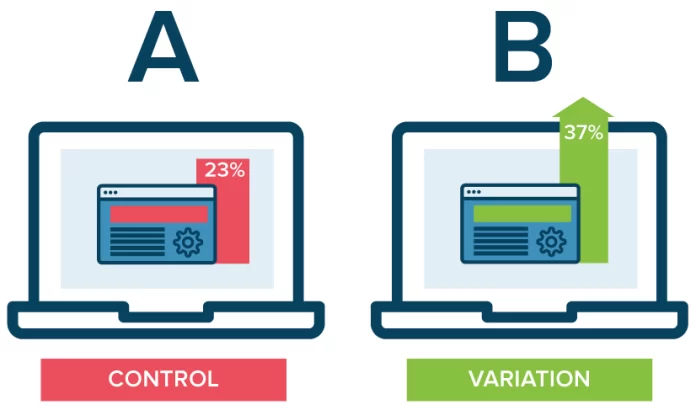3. Google Optimization
Next on our list is Google Optimize, which provides tools led by the Google Marketing Platform to assist businesses in improving the performance of their websites.
The A/B testing tool provided by Google Optimize goes above and beyond the capabilities of the usual A/B testing tool. Users can run more than two versions of material or visuals, as well as:
- Multivariate analysis.
- URL split testing
- Experiments on the table.
- Furthermore, it is completely free to use for all of your testing and customizing needs.
4. Optimizely
Optimizely, which proudly serves over 100 Fortune 500 organizations, is an excellent experimentation platform for business marketing, product, and engineering teams.
You may conduct many experiments on a single page while evaluating the other variables on your website using its robust A/B testing and multi-page experimentation tool. Furthermore, the platform supports testing on dynamic websites as well as many experimental aspects such as region, ad campaign, and cookies.
5. Crazy Egg
Crazy Egg is a popular website optimization program that provides A/B testing, usability testing tools, and heat mapping.
The platform’s A/B testing tool allows users to test versions of every single page on the website by adding a single snippet of code to the pages where the experiment is being performed.
A little test on your content and website design may go a long way toward increasing traffic, leads, and even sales if done correctly. Without further ado, we’d like to provide you with some amazing dos to restart your A/B testing.
- Test as many variables as possible: Of course, we have a lot of factors to test, such as color, subject line, content offer, and so on. Marketers must experiment with as many factors as possible.
- Start Small: If this is your first time doing A/B testing, start small. Begin the testing with something as basic as the size or color of a CTA button.
- Maintain constant testing: Whenever something new is added to the website, maintain constant testing. There is no reason why you shouldn’t test anything.
- Examine the areas where the results are statistically significant: Do not make assumptions; instead, do a practical analysis to see whether your results are statistically significant.
- Make changes based on results: Once the results are analyzed, you must make changes based on the results only.









